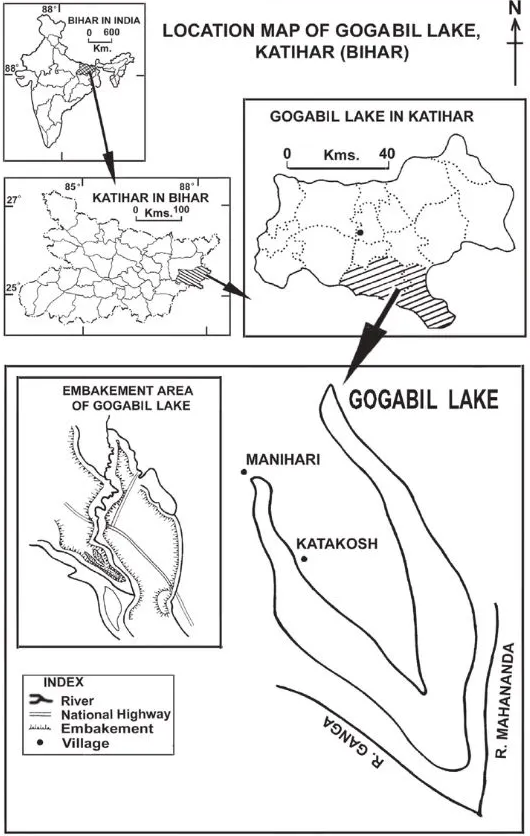Why in the News?
Gogabeel Lake, located in Katihar district, Bihar, has been officially designated as India’s 94th Ramsar Site and sixth from Bihar.

About Gogabeel Lake:
- Overview: An oxbow lake situated in Katihar district, Bihar, within the Trans-Gangetic Plains, formed between the Ganga and Mahananda rivers.
- Hydrological Nature: Connects to both rivers during monsoon floods, functioning as a dynamic floodplain wetland.
- Legal Status: Declared Bihar’s first community reserve, co-managed by local communities and forest authorities.
- Ecological Significance: Serves as a key habitat for migratory birds and a breeding site for vulnerable species such as the Lesser Adjutant Stork, Black-necked Stork, and Smooth-coated Otter.
- Biodiversity: Hosts 90+ bird species (including 30 migratory), wetland flora, and fish species like Helicopter Catfish (Wallago attu).
- Ecosystem Services: Provides flood mitigation, groundwater recharge, carbon storage, and climate regulation, contributing to the Gangetic ecosystem’s stability.
- Cultural Linkages: Integral to local festivals like Sirva, Adra, and Chhath, symbolising people–nature harmony in rural Bihar.
Back2Basics: Ramsar Convention
- Adoption: Signed in Ramsar, Iran (1971); in force since 1975 as an intergovernmental treaty for wetland conservation and wise use.
- Scope: Defines wetlands broadly – lakes, rivers, marshes, mangroves, coral reefs, and man-made water bodies.
- Global Membership: 172 member nations, with 2,546 Ramsar Sites worldwide.
- India’s Position: Joined in 1982; now ranks 1st in Asia and 3rd globally with 94 Ramsar Sites covering 13.6 lakh hectares.
- Designation Criteria: A site qualifies if it supports rare species, ecological diversity, endangered habitats, or 20,000+ waterbirds.
| [UPSC 2022] Consider the following pairs: Wetland/Lake Location 1. Hokera Wetland – Punjab 2. Renuka Wetland – Himachal Pradesh 3. Rudrasagar Lake – Tripura 4. Sasthamkotta Lake – Tamil Nadu. How many pairs given above are correctly matched? (a) Only one pair (b) Only two pairs* (c) Only three pairs (d) All four pairs |
Get an IAS/IPS ranker as your 1: 1 personal mentor for UPSC 2024

